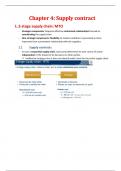Summary
Summary Financial Management 214: Chapter 2: Financial statements
- Course
- Financial management 214
- Institution
- Stellenbosch University (SUN)
In depth summary of Chapter 2 for financial management 214 which covers the financial statements.
[Show more]





